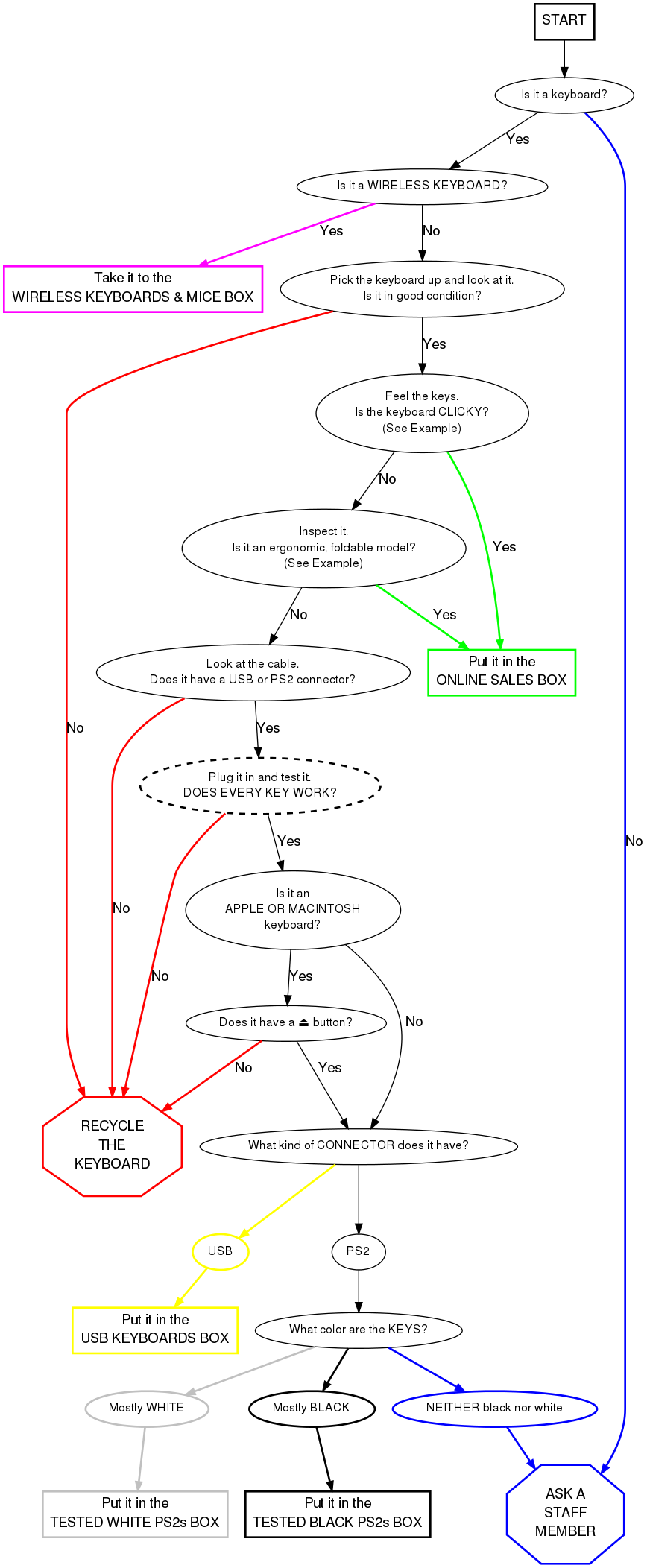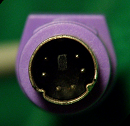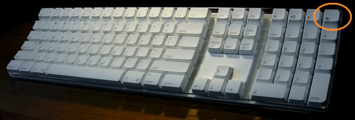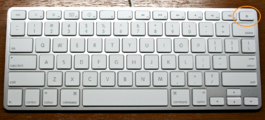Difference between revisions of "Keyboard Testing"
Jump to navigation
Jump to search
(dividing up functional keyboards) |
|||
| (36 intermediate revisions by 6 users not shown) | |||
| Line 1: | Line 1: | ||
| − | = | + | {{migrated}} |
| + | [https://docs.google.com/document/d/1naptgZ3KzCSYvbfvkRVdMUldrsd7yGjCcuY78BfdGlU/edit?usp=sharing Link] | ||
| − | Keyboards | + | ==Testing Keyboards== |
| + | Keyboards are tested for functionality. The good ones are then distributed throughout the facility. | ||
| + | |||
| + | The bad ones are recycled. | ||
<graphviz> | <graphviz> | ||
| − | digraph{ | + | digraph KB { |
| + | |||
| + | node [fontname="Helvetica", fontsize="12"] | ||
| + | edge [fontname="Helvetica"] | ||
| + | |||
| + | START [style="bold", shape="box", color="white"] | ||
| + | test [style="dashed, bold"] | ||
| + | recycle [style="bold", shape="octagon", color="red"] | ||
| + | staff [style="bold", shape="box", color="blue"] | ||
| + | obox [style="bold", shape="box", color="green"] | ||
| + | usbk [style="bold", shape="box", color="orange"] | ||
| + | blkbox [style="bold", shape="box"] | ||
| + | whtbox [style="bold", shape="box", color="grey"] | ||
| + | wbox [style="bold", shape="box", color="magenta"] | ||
| + | usb [color="orange", style="bold"] | ||
| + | white [color="grey", style="bold"] | ||
| + | black [style="bold"] | ||
| + | neither [color="blue", style="bold"] | ||
| + | |||
| + | |||
| + | START [fontsize="14"] | ||
| + | basic [label="Is it a keyboard?"] | ||
| + | aesthetic [label="Pick the keyboard up and look at it.\nIs it in good condition?"] | ||
| + | usbk [label="Put it in the\nUSB KEYBOARDS BOX", fontsize="14"] | ||
| + | color [label="Is it mostly black or white?"] | ||
| + | clicky [label="Feel the keys.\nIs the keyboard CLICKY?\n(See Example)"] | ||
| + | ergo [label="Inspect it.\nIs it an ERGONOMIC, POP-OUT MODEL?\n(See Example)"] | ||
| + | staff [label="Ask a STAFF MEMBER", fontsize="14"] | ||
| + | obox [label="Put it in the\nONLINE SALES BOX", fontsize="14"] | ||
| + | recycle [label="RECYCLE\n\nTHE\n\nKEYBOARD", fontsize="14"] | ||
| + | port [label="What kind of CONNECTOR does it have?"] | ||
| + | ps2 [label ="PS2"] | ||
| + | usb [label="USB"] | ||
| + | color [label="What color are the KEYS?"] | ||
| + | black [label="Mostly BLACK"] | ||
| + | white [label="Mostly WHITE"] | ||
| + | neither [label="NEITHER black nor white"] | ||
| + | weird [label="Look at the cable.\nDoes it have a USB or PS2 connector?"] | ||
| + | test [label="Plug it in and test it.\nDOES EVERY KEY WORK?"] | ||
| + | blkbox [label="Put it in the\nTESTED BLACK PS2s BOX", fontsize="14"] | ||
| + | whtbox [label="Put it in the\nTESTED WHITE PS2s BOX", fontsize="14"] | ||
| + | wireless [label="Is it a WIRELESS KEYBOARD?"] | ||
| + | wbox [label="Take it to the\nWIRELESS KEYBOARDS & MICE BOX", fontsize="14"] | ||
| + | apple [label="Is it an\nAPPLE OR MACINTOSH\nkeyboard?"] | ||
| + | eject [label="Does it have a ⏏ button?\n(See Below)"] | ||
| + | |||
| + | START -> basic | ||
| + | |||
| + | basic -> wireless[label="Yes"] | ||
| + | basic -> staff [label="No", color="blue", style="bold", taillabel="\n\n\n No"] | ||
| + | |||
| + | wireless -> aesthetic [label="No"] | ||
| + | wireless -> wbox [label="Yes", color="magenta", style="bold"] | ||
| + | |||
| + | aesthetic -> clicky [label="Yes"] | ||
| + | aesthetic -> recycle [label="No", color="red", style="bold", taillabel="\n\nNo"] | ||
| + | |||
| + | clicky -> ergo [label="No"] | ||
| + | clicky -> obox [label="Yes", color="green", style="bold"] | ||
| + | |||
| + | ergo -> weird [label="No"] | ||
| + | ergo -> obox [label="Yes", color="green", style="bold"] | ||
| + | |||
| + | weird -> test [label="Yes"] | ||
| + | weird -> recycle [label="No", color="red", style="bold"] | ||
| + | |||
| + | test -> apple [label="Yes"] | ||
| + | test -> recycle [label="No", color="red", style="bold"] | ||
| + | |||
| + | apple -> eject [label="Yes"] | ||
| + | apple -> port [label=" No"] | ||
| + | |||
| + | eject -> port [label="Yes"] | ||
| + | eject -> recycle [label="No", color="red", style="bold"] | ||
| − | + | port -> ps2 | |
| − | + | port -> usb [color="orange", style="bold"] | |
| − | |||
| − | |||
| − | + | ps2 -> color | |
| − | |||
| − | |||
| − | |||
| − | + | color -> black [style="bold"] | |
| − | + | color -> white [color= "grey", style="bold"] | |
| + | color -> neither [color= "blue", style="bold"] | ||
| − | + | black -> blkbox [style="bold"] | |
| − | |||
| − | |||
| − | + | white -> whtbox [color="grey", style="bold"] | |
| − | |||
| − | |||
| − | + | neither -> staff [color="blue", style="bold"] | |
| − | |||
| − | |||
| + | usb -> usbk [color="orange", style="bold"] | ||
| + | |||
| + | } | ||
</graphviz> | </graphviz> | ||
| − | == | + | [[Image:PS2.png||left|thumb|375px|This is a PS2 keyboard connector.]] [[Image:USB.png||center|thumb|375px|This is a USB keyboard connector.]] |
| − | + | ||
| − | + | ==Mac Keyboards== | |
| + | |||
| + | The ⏏ (Eject) button for all Macintosh or Apple keyboards is located on the upper right-hand corner of the keyboard, as shown below. | ||
| + | |||
| + | <gallery perrow=3 widths=375px> | ||
| + | |||
| + | Image:Apple Keyboard A2.png | ||
| + | Image:Apple Keyboard A1.png | ||
| + | Image:Apple Keyboard A.png | ||
| + | |||
| + | </gallery> | ||
| + | |||
| + | Older Mac keyboards do not have this button; an example USB keyboard is shown here: | ||
| − | + | [[Image:Apple Keyboard B.png|center||thumb|375px|Note the absence of the eject key on the upper right-hand corner]] | |
| − | + | ==Testing Instructions== | |
| − | |||
| − | |||
| − | + | * Turn the computer on. | |
| + | * Connect the keyboard to the system using the extender on the right, or the USB port in front. | ||
| + | ** To test a Macintosh or Apple keyboard, select the "Apple Layout". | ||
| + | ** To test standard keyboards, select the standard "104-key Layout". | ||
| + | ** Select CONTINUE. | ||
| + | * Go through and test every key. | ||
| + | ** You will see on the screen what looks like a keyboard. Press a key on your keyboard. | ||
| + | ** If the corresponding key on the screen turns black, it works. | ||
| + | ** If the key does nothing, it does not work. | ||
| + | *If any keys do not work, RECYCLE the keyboard. | ||
| + | ** When you have determined that a keyboard does not work, cut off the cord. | ||
| + | ** Put the cord in the metal shopping cart in the main receiving room. | ||
| + | ** Put keyboards in the shopping cart closest to you. | ||
| + | *** When a cart gets full, notify a staff member. | ||
| + | * When you have finished testing a keyboard, hit "Reset" to reset the image in the program. | ||
| + | *Place working keyboards in the appropriate boxes. | ||
| + | **When a box gets full, ask a staff member where it goes. | ||
| + | * Plug in a new keyboard and start all over! | ||
| − | + | ==Notes from Free Geek Vancouver== | |
| − | |||
| − | |||
| − | |||
| − | |||
| − | |||
| − | |||
| + | The [[Finer Points of Keyboard Sorting]] | ||
| − | |||
[[Category:Hardware Testing]] | [[Category:Hardware Testing]] | ||
[[Category:Howto]] | [[Category:Howto]] | ||
Latest revision as of 15:18, 8 August 2014
|
This page has been migrated to a document on Free Geek's Google Drive. Information remaining behind may no longer be relevant. MIGRATOR: When you have tagged this page as migrated, (Link to new page immediately below.) |
Testing Keyboards
Keyboards are tested for functionality. The good ones are then distributed throughout the facility.
The bad ones are recycled.

Mac Keyboards
The ⏏ (Eject) button for all Macintosh or Apple keyboards is located on the upper right-hand corner of the keyboard, as shown below.
Older Mac keyboards do not have this button; an example USB keyboard is shown here:
Testing Instructions
- Turn the computer on.
- Connect the keyboard to the system using the extender on the right, or the USB port in front.
- To test a Macintosh or Apple keyboard, select the "Apple Layout".
- To test standard keyboards, select the standard "104-key Layout".
- Select CONTINUE.
- Go through and test every key.
- You will see on the screen what looks like a keyboard. Press a key on your keyboard.
- If the corresponding key on the screen turns black, it works.
- If the key does nothing, it does not work.
- If any keys do not work, RECYCLE the keyboard.
- When you have determined that a keyboard does not work, cut off the cord.
- Put the cord in the metal shopping cart in the main receiving room.
- Put keyboards in the shopping cart closest to you.
- When a cart gets full, notify a staff member.
- When you have finished testing a keyboard, hit "Reset" to reset the image in the program.
- Place working keyboards in the appropriate boxes.
- When a box gets full, ask a staff member where it goes.
- Plug in a new keyboard and start all over!






